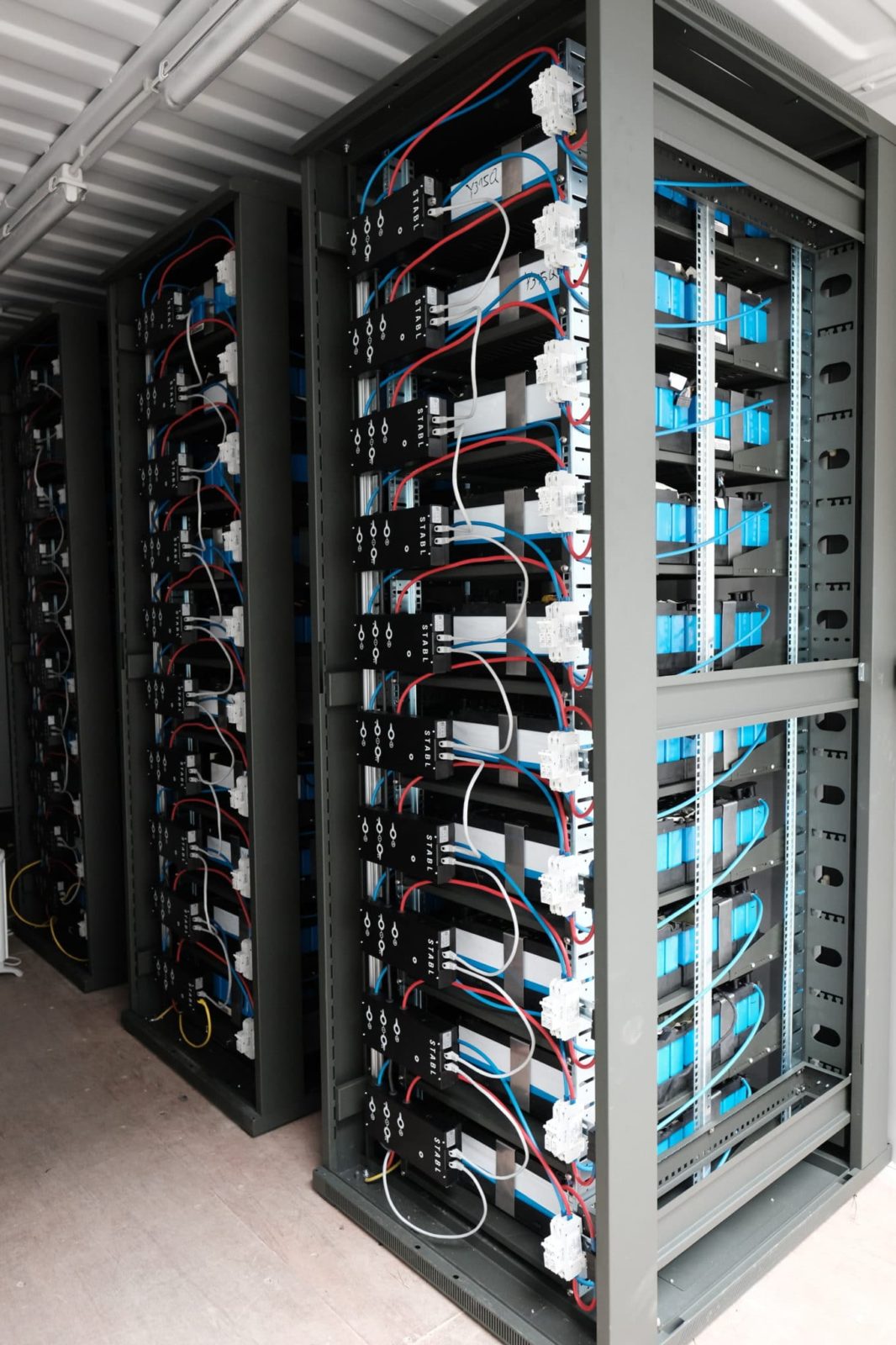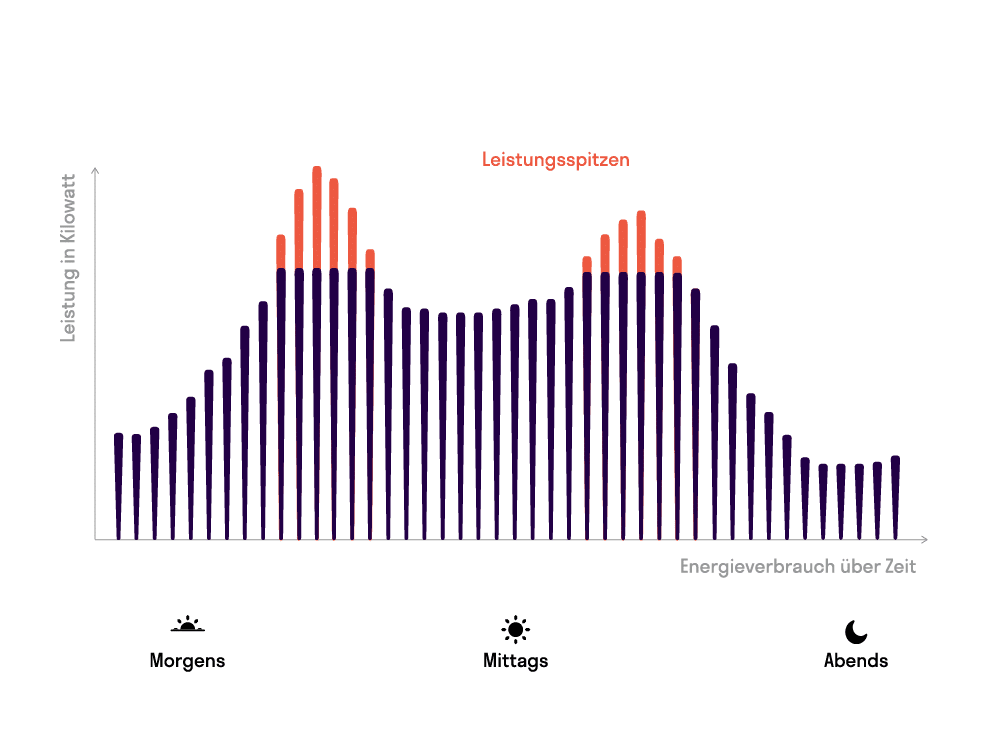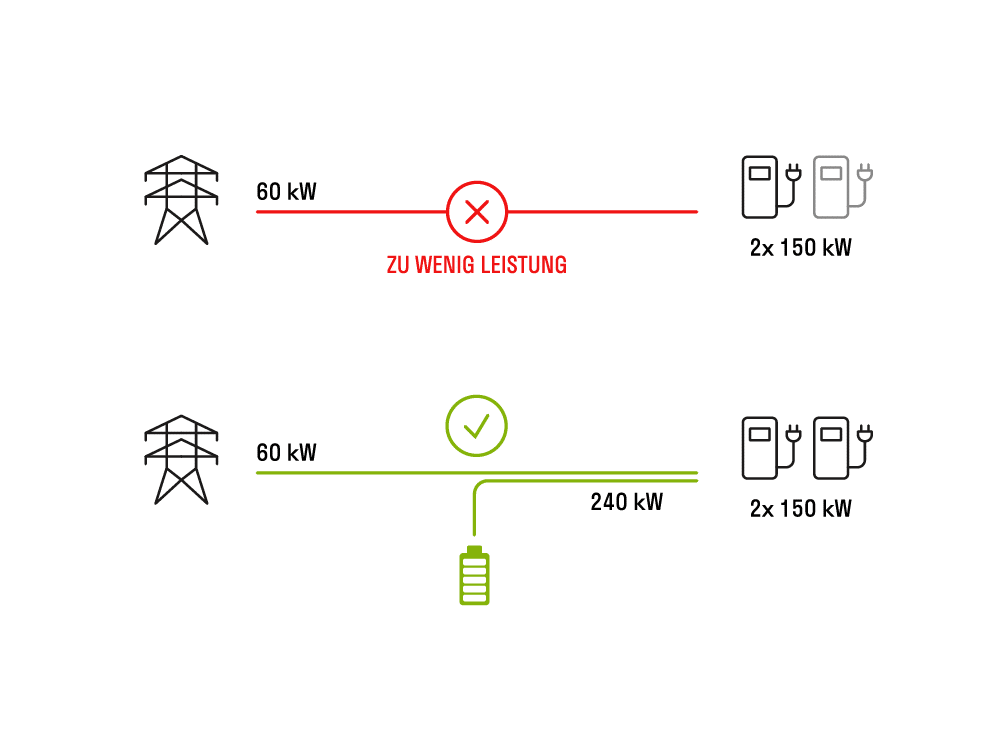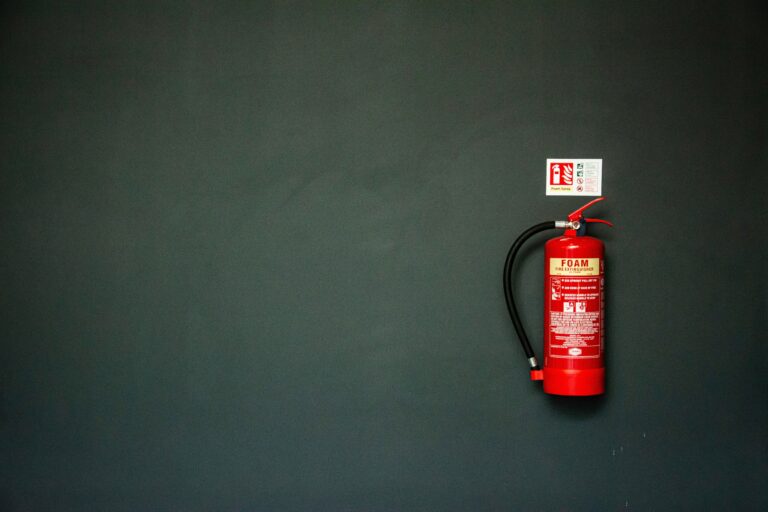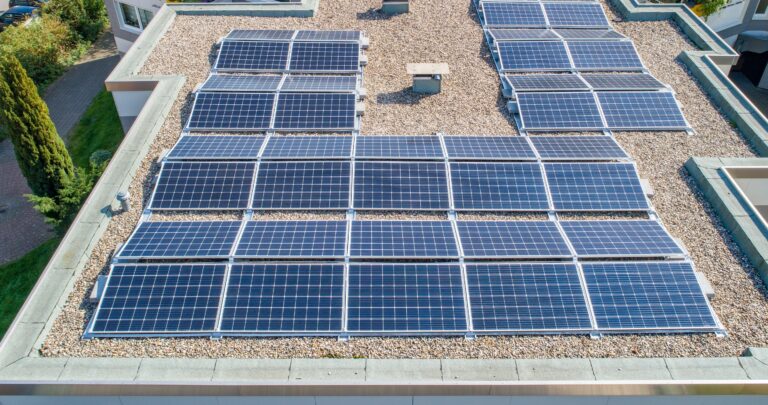Während Privatpersonen ihre Motivation für einen Heimspeicher daraus ziehen, sich für eine nachhaltige Energieversorgung einzusetzen, spielt bei Gewerbe und Industrie die Wirtschaftlichkeit eine wesentlich größere Rolle. Zwar möchten Sie Ihren Betrieb sicherlich auch nachhaltig gestalten – sonst würden Sie diesen Blog Post wahrscheinlich gar nicht lesen – aber profitabel sollte das Unterfangen schon auch sein.
In diesem Artikel zeigen wir Ihnen, warum die weitläufige Meinung, dass Stromspeicher nur mit üppigen Förderungen und großzügigen Rabatten rentabel sind, nicht mehr gilt und warum und für wen sich 2021 ein Gewerbespeicher lohnen kann.
Wie funktionieren Gewerbespeicher?
Prinzipiell funktionieren Stromspeicher für Gewerbe und Industrie genauso wie ihre kleinen Geschwister für den Heimbereich. Sie machen Energie zeitlich flexibel einsetzbar. Der klassischste Nutzungsfall ist der in Verbindung mit einer Solaranlage. Wird tagsüber viel Energie durch die PV-Anlage erzeugt, passiert es oft, dass der Stromverbrauch niedriger ist als die Erzeugung. Ohne einen Speicher würde diese Energie verschwendet. Mit einem Batteriespeicher kann überschüssiger Strom aufgefangen werden und wird in Schlechtwetterzeiten dann genutzt. Doch auch ohne PV-Anlage können Stromspeicher rentabel sein.
Stetig sinkende Speicherpreise
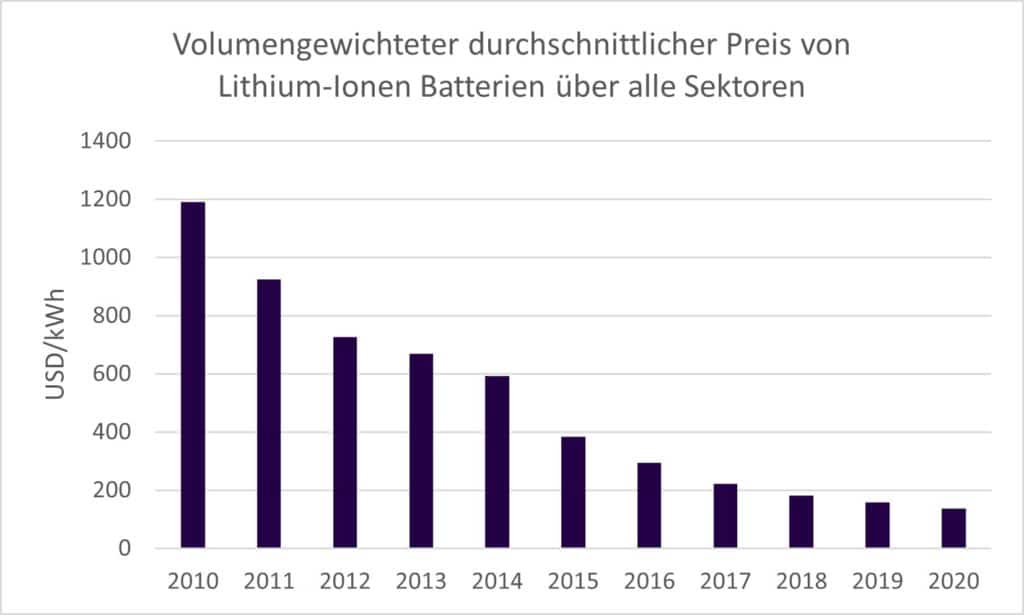
Lange Zeit waren Stromspeicher unrentabel und teuer, weshalb auch die Elektromobilität nur so schleppend vorangekommen ist. Doch die Zeiten haben sich geändert – die Produktion von Lithium-Ionen-Batterien hat in den letzten Jahren stark angezogen und soll bis 2030 eine Kapazität von 1,3 TWh erreichen, eine Vervierfachung der Produktionskapazität 2019. Der Preis von Lithium-Ionen-Batterien ist hingegen von 2010 bis 2020 um ~88 % gesunken. Das macht sich auch am Speichermarkt bemerkbar: im Heimbereich wurden in Deutschland im Jahr 2020 ca. 88.000 Heimspeicher installiert. Auch der Umsatz von Gewerbespeichern stieg im Jahr 2019 um ca. 23 % Prozent.
Attraktive Förderungen
Hinzu kommt, dass es für PV-Anlagen & Stromspeicher im DACH-Raum, auch für Gewerbe, zahlreiche Förderprogramme gibt. Unten zusammengefasst sehen Sie die Förderprogramme der EU, Deutschlands inkl. der einzelnen Länder, Österreichs und der Schweiz. Die untenstehenden Informationen finden Sie auch im Förderatlas des pv-magazine.

Europäische Union
Europäische Union
- Gemeinsames INTERREG-Sekreteriat Deutschland - Nederland c/o Euregio Rhen-Waal

Deutschland
Deutschland

Österreich
Österreich
- Weitere bundeslandspezifische Förderung

Schweiz
Schweiz

Baden-Württemberg
Baden-Württemberg
- Intelligente Anbindung von Ladeinfrastruktur an das Stromnetz

Bayern
Bayern
- München: 300€ pro kWh i.V.m. PV. Förderung bis max. 15.000€ oder max. 50 %. Bei Insel- und Autarkiefähigkeit noch mal 500€

Berlin
Berlin
Max. 15.000€

Brandenburg
Brandenburg
- Energieaudits und Energieberatung mit 35-80 % gefördert

Hessen
Hessen
- Gewerbe mit bis zu 30 %. Min. 30.000€;
Max. 50.0000€

Mecklenburg-Vorpommern
Mecklenburg-Vorpommern
- Beratung & Planung mit 5.000€;
Max. 50 % der Finanzierung; Amortisationszeit min. 5 Jahre

Niedersachsen
Niedersachsen
- Nicht öffentl. Ladeinfrastruktur (auch PV & Speicher als Puffer / Booster) mit 60-80 % der Gesamtausgaben. Einzelne Ladepunkte bis 22 W bis 2.500€; Ladepunkte ab 100 kW bis 10.0000€. (Planung & Beratung bis zu 20 %)

Nordrhein-Westfalen
Nordrhein-Westfalen

Rheinland-Pfalz
Rheinland-Pfalz
(Min. 10 kWh Kapazität + 10 kWp PV)

Sachsen

Sachsen-Anhalt
Sachsen-Anhalt
- Unternehmen (je nach Größe) Speicher mit Energiemanagementsystem bis max. 500.000€

Schleswig-Holstein

Thüringen
Thüringen
- Mieterstrom bis 80%
- Max. 100.000€, min. 60% Eigenverbrauch
Gewerbespeicher senken Ihre Betriebskosten – sogar ohne Photovoltaik
Für den Heimverbrauch ist es klar: ein Stromspeicher gekoppelt mit der PV-Anlage macht unabhängig von steigenden Energiepreisen und hilft die Energiekosten im Haushalt nachhaltig zu senken. Doch wie sieht es für Gewerbekunden aus, die oft wesentlich geringere Stromkosten zahlen müssen? Auch hier lohnt es sich oft, einen Stromspeicher zu installieren.
Lastspitzenkappung oder Peak-shaving
Neben dem klassischen Anwendungsfall mit einer PV-Anlage um den Eigenverbrauch zu erhöhen, gibt es speziell für Gewerbe interessante Wege, um Betriebskosten zu senken. Bei Betrieben mit hohen Lastspitzen, zum Beispiel bei Anfahren von Produktionsmaschinen, kann ein Gewerbespeicher Leistungspreise senken.
Anbieten von Ladesäulen
Falls Sie die Möglichkeit anbieten wollen, Elektroautos zu laden, kann es gut sein, dass Ihre Netzanschlussleistung zu gering ist und Sie bei Ihrem Stromanbieter teure Gebühren zahlen müssen, um die Netzanschlussleistung zu erhöhen. Dies ist vor allem relevant für Schnellladesäulen. Hier schafft ein Gewerbespeicher Abhilfe: er kann mit der niedrigen Netzanschlussleistung kontinuierlich geladen werden und stellt die nötige Leistung bereit, wenn ein Elektroauto an die Ladesäule angeschlossen wird.
Individuelle Betrachtung ist nötig
Allgemein gilt, dass die Wirtschaftlichkeit immer im konkreten Zusammenhang mit dem Projekt steht. Treten Sie noch heute in Kontakt mit uns und wir überprüfen gemeinsam mit unseren Partnern, ob bei Ihnen die Voraussetzungen für wirtschaftlichen Betrieb gegeben sind. Hierfür stehen wir bei STABL Energy als Wechselrichter-Hersteller zusammen mit unseren Partnern als Berater zur Verfügung.
Fazit
Dass Stromspeicher teuer und nur etwas für Nachhaltigkeits-Enthusiasten sind, ist im Jahr 2021 nicht mehr aktuell. Durch sinkende Speicherpreise, die vielfältigen Anwendungsmöglichkeiten und attraktive Förderprogramme der Länder können Sie als Gewerbetreibende Ihren Betrieb auf nachhaltige Weise wirtschaftlicher machen. Abschließend haben wir von STABL Energy noch einen Profi-Tipp für Sie:
Effizienz beachten!
Eine wichtige Betrachtung bei den Betriebskosten, die oft übersehen wird, ist die Effizienz des Systems. Bei den Speicher- und Entladeprozessen entstehen durch die Energieumwandlung Verluste, was sich negativ auf die Betriebskosten auswirken kann. Vor allem der Wechselrichter spielt hier eine wesentliche Rolle. Erfahren Sie hier mehr darüber wie der Wechselrichter von STABL Energy konventionellen Wechselrichtern in puncto Wirtschaftlichkeit überlegen ist.
Referenzen und mehr Informationen
- https://www.pv-magazine.de/2021/04/13/foerderatlas-gewerbespeicher-2021-was-wo-gefoerdert-wird/
- https://pvaustria.at/forderungen/
- https://www.energieheld.ch/solaranlagen/photovoltaik/foerderung
- https://www.woodmac.com/press-releases/global-lithium-ion-cell-manufacturing-capacity-to-quadruple-to-1.3-twh-by-2030/
- https://www.bloomberg.com/news/articles/2020-12-17/this-is-the-dawning-of-the-age-of-the-battery?srnd=green
- https://www.eupd-research.com/pv-heimspeichermarkt-in-2020-auf-rekordkurs/
- https://www.bves.de/wp-content/uploads/2020/03/Branchenanalyse_BVES_2020.pdf
Sie haben Interesse an einem Speicher mit STABL Wechselrichter-Technologie?
Nehmen Sie Kontakt mit uns auf! Wir freuen uns darauf, von Ihnen zu hören und Ihre Fragen zu beantworten.


